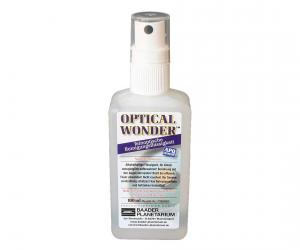- Telescopes
- Overview:
Telescopes - Achromatic Refractor
- Apochromatic Refractor
- Overview:
Apochromatic Refractor - ED Refractor - less color aberration than an achromatic
- SD APO - color free 2-element APO objective
- EDT APO - 3 element ED objective
- High End APO with 3-element APO objective - no color aberation
- Flatfield APO with flat field for Astrophotography
- All Apos and EDs from all manufacturers - large overview
- TS APO and ED from Japan with high quality optics
- Overview:
- Newtonian Telescopes
- Dobsonian Telescopes
- RC Ritchey Chretien Telescopes
- Casssegrain Telescopes
- Reflektor Telescopce with Lens Correcture
- Maksutov Cassegrain Telescopes
- GoTo Telescopes
- Solar Telescopes H-Alpha
- Overview:
- Mounts Tripods Rings Rails Power Supply ...
- Overview:
Mounts Tripods Rings Rails Power Supply ... - Mounts Equatorial with GoTo
- Mounts Equatorial without GoTo
- Mounts Azimutal with GoTo
- Mounts Azimutal without GoTo
- Mounts GoTo - Harmonic Drive
- Travel mounts for astro imaging
- Tripods Piers Polar Wedges
- Mount Control & Electronics
- Dovetail Clamps, Plates and Mount Adapters
- Tube Rings
- Power Supply
- Counterweights Balance Weights
- Mount Accessories - Other
- Overview:
- Telescope Accessories
- Overview:
Telescope Accessories - Eyepieces
- Barlows & Reducer Lenses
- Diagonal Mirrors and Prisms
- Binocular Viewers
- Finder Scopes
- Telescope Collimation and Test
- Cleaning Tools
- Transport and Storage
- Dust protection for Telescopes & Accessories
- Stray Light Protection
- Dewcaps and Heater
- Focusers, Adapters, Motorfocus
- Telescope DIY & Improvement
- Other telescope accessories
- Replacement Parts
- Overview:
- Filters
- Overview:
Filters - Color Filters and Color Filtersets
- Nebular Filters for Visual Observing
- Neutral-Density and Polfilter
- Photo Narrowband Nebular Filters
- Photo Broadband Filters
- Photo Planetary Filters
- Photo R-G-B and IR Cut Filters
- Photo - Filtersets
- Photometric Filters
- Clip Filter for DSLR Cameras
- Filter Wheels and Filterslider
- Solar Filters for white light
- Solarfilter for H-Alpha and Calcium
- Overview:
- Adaptors
- Overview:
Adaptors - Adapter 1,25" and 24,5mm
- Adapter 2"
- Adapter T2 - M42x0.75
- Adapter M48x0,75
- Adapter M54
- Adapter SC
- Adapter M63
- Adapter M68
- Adapter to other Threads
- Adapter Extensions
- Adapter camera bayonet
- Adapter Objective Filterthread
- Adapter Quick Changing , Rotation
- Adapter Eyepiece Projection
- Adapters Tilting
- Overview:
- Astrophotography and Photography
- Overview:
Astrophotography and Photography - Cooled Cameras
- Cameras without Cooling
- Deep-Sky Cameras uncooled
- Set-Offers Camera, Filter, Wheels
- Acessories for Cameras
- Travel mounts for astro imaging
- Imaging Correctors for Telescopes
- Autoguiding Cameras & Sets
- Everything for Guiding
- Focusing aids - Bahtinov mascs
- Flat Field foils and boxes
- Lenses for Cameras
- Piggyback Camera Holder
- Camera Bags, Photocases & more
- Digital Camera and Smartphone Adapter
- Other photo accessories
- Overview:
- Binoculars, Spotting Scopes, Microscopes, Range Finders
- Overview:
Binoculars, Spotting Scopes, Microscopes, Range Finders - Roof Prism Binoculars
- Binoculars with Porro prisms
- Binoculars from 100mm Aperture
- Binoculars with 1,25 inch eyepieces
- TSMX APO Binoculars
- Binoculars for Astronomy
- Binoculars Hiking Bird watching
- Monoculars - Opera Binoculars
- Accessories for Binoculars
- Spotting Scopes
- Range Finders
- Microscopy
- Bags for Phototripods & Binoculars
- Overview:
- Phototripods and Binomounts
- Books, Software
- Overview:
Books, Software - Books for Astronomy Beginners
- Star Charts and Planispheres
- Books about our Solar System
- Observing Tips for Amateurs
- Popular Astronomy Literature
- Teaching material
- Astrophotography books
- Telescopes, Observatories, Construction
- Calendars Yearbooks
- Software, Star Charts
- Books for Microscopers
- Books Nature and Animals
- Nature Photography TimeLapse
- Overview:
- Night Vision, Magnifiers, Weather, Domes & more
- Beginner Astronomy and Gift Ideas
- Second Hand & Special Offers
- New products
Manufacturer: Astronomik Filter
Product number: 8h0058
EUR199.00new
EUR 199,00
incl. 19 % VAT (DE)
The VAT indicated refers to that applicable in Germany. After logging in, the VAT amount is adjusted to the applicable VAT of the stored delivery country. Therefore, the final price may vary accordingly.
excl. 6.95 € shipping costs (DE)
more details to the shipping costs ...Please log in to calculate shipping costs to your country.
rating: 5.0 of 5Astronomik ASHB2 - H-Beta Filter - 2 inch2
- Details..
- Technical data..
- In the box..
The Astronomik H-beta is a filter for visual observation of hydrogen nebulae, in particular with instruments of larger aperture.
It lets the light of the H-beta emission line pass nearly unhindered and blocks the remaining spectral range to the extent that the eye is dark adapted. By the use of the Astronomik H-beta filter, the contrast is increased so strongly that even the observation of the Horse Head Nebula with telescopes of 10" - 12" reaches the realm of possibility.
Main use:
The optimal aperture ratio for the use of the filter is 1:4,5 to 1:6. The range of application extends from 1:3.5 to 1:15. Transmission losses and chromatic distortions, which arise with other filters, are only apparent with the Astronomik filters when extremely fast aperture ratios of 1:3 and higher are used. The Astronomik H-beta filter will allow you to view large objects in the whole field of view of the eyepiece, even when using wide-angle eyepieces - not only in the center of the eyepiece. This filter should be used on telescopes with a diameter of 8" (20 cm) or larger. Smaller instruments do not gather enough light for meaningful and satisfying astronomical work. Due to the high optical quality of the Astronomik H-beta filter substrate, you will see the same needle-sharp stars as you would from your regular telescope.
Other uses: In the whole sky, there are few objects that benefit from the use of this filter in visual observation. On the other hand H-beta filters often decide about seeing or not seeing an object. Without a filter the eye is hardly able to discover the low contrasts of H-alpha regions. With EOS Clip Filter even in extreme light polluted areas photography with DSLR cameras becomes possible.
Suitability: Visual observation (dark skies): Very good, but only suitable for a few objects Visual observation (urban skies): Unsuitable Film photography: It depends, very long exposure time CCD and CMOS photography: Good, when used with an additional IR-blocking filter DSLR photography (original): Very good, but only suitable for a few objects DSLR photography (astro modified): Very good, but only suitable for a few objects DSLR photography (MC modified): Good, when used with an additional IR-blocking filter Webcam / Video (Planets): Unsuitable Webcam / Video (Deep Sky): Unsuitable
Technical Data: Transmission of nearly 100% of the H-beta line complete blocking of all disturbing wavelengths Main operational use: Hydrogen Nebulae No moisture (humidity) sensitivity, no aging, and totally scratch-proof Parfocal with other Astronomik filters Glass thickness: 1 mm Diffraction limited, the filter will not reduce the optical performance of your telescope! Astronomik filters are delivered in a high-quality, long lasting, filter box
Transmission curve:

The horizontal axis is the wavelength in nanometers (nm). 400 nm is deep blue, at 520 nm the human eye senses green and at 600 nm red. At 656 nm is the famous "H-Alpha" emission line of hydrogen. The transmission in % is plotted on the vertical axis. The red line shows the transmission of the filter. Visual filters: The grey line in the background shows the relative sensitivity of the human eye at night. The maximum is at ~510 nm and drops to longer and shorter wavelengths. You can easily see, that you can´t see anything of the H-alpha line at night (even if you can during daylight!) The sensitivity at 656 nm is 0% at night! Photographic filters: The grey line in the background shows the sensitivity of a typical astro camera sensor. The most important artifical emission lines are shown in orange. The artifical light pollution is dominated by see mercury (Hg) and sodium (Na), which are used in nearly all streetlights. The most important emission lines from nebulas are shown in green. The most important lines are from ionized hydrogen (H-alpha and H-beta) and double ionized oyxgen ([O III]). The square brackets indicate that these lines are forbidden.
It lets the light of the H-beta emission line pass nearly unhindered and blocks the remaining spectral range to the extent that the eye is dark adapted. By the use of the Astronomik H-beta filter, the contrast is increased so strongly that even the observation of the Horse Head Nebula with telescopes of 10" - 12" reaches the realm of possibility.
Main use:
The optimal aperture ratio for the use of the filter is 1:4,5 to 1:6. The range of application extends from 1:3.5 to 1:15. Transmission losses and chromatic distortions, which arise with other filters, are only apparent with the Astronomik filters when extremely fast aperture ratios of 1:3 and higher are used. The Astronomik H-beta filter will allow you to view large objects in the whole field of view of the eyepiece, even when using wide-angle eyepieces - not only in the center of the eyepiece. This filter should be used on telescopes with a diameter of 8" (20 cm) or larger. Smaller instruments do not gather enough light for meaningful and satisfying astronomical work. Due to the high optical quality of the Astronomik H-beta filter substrate, you will see the same needle-sharp stars as you would from your regular telescope.
Other uses:
Suitability:
Technical Data:
Transmission curve:

| Transmission at 486 nm (H-beta): | 97% |
| FWHM: | 12 nm |
| Filter thickness: | 1 mm |
| Substrate: | Fine-optical polished glass |
| Anti reflex coating: | No moisture-sensitivity, no aging, and totally scratch-proof |
| Cell: | Aluminium |
Recommended accessories
Cleaning & Collimating
TS-Optics Optical Super Microfiber Cleaning Cloth
EUR 5,99RRP EUR 7,95you save 24.7% (EUR 1,96)
Reviews
Written by Stefano Missiaggia
on 2022-02-18
"Ottimo prodotto "
Written by Nadir Teymurov
on 2019-07-20
This new Astronomik H-Beta filter is definitely in top-tier to have. Transmission is strictly within announced range (other filters, with just a few exceptions, are much wider and typically catching some part of O-III as well). Horsehead Nebula (IC 434), which was always a challenge with good UHC filters before, was an easy target even on 10" dobsonian, yet very detailed on 16" under dark skies. Other hydrogen objects in the sky were good as well.
Written by Michel Willemin
on 2017-12-06
"Wie spezifiziert"











